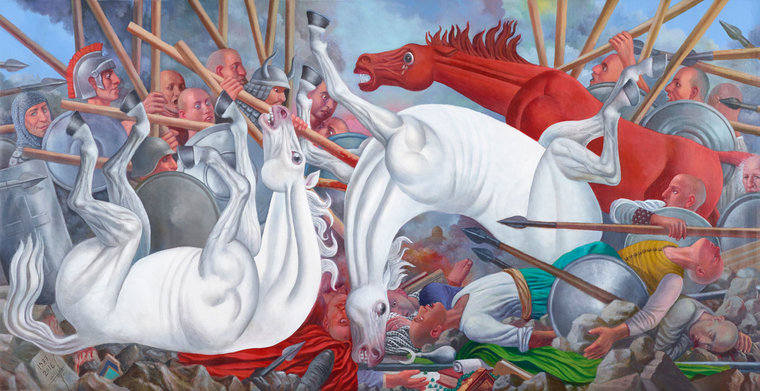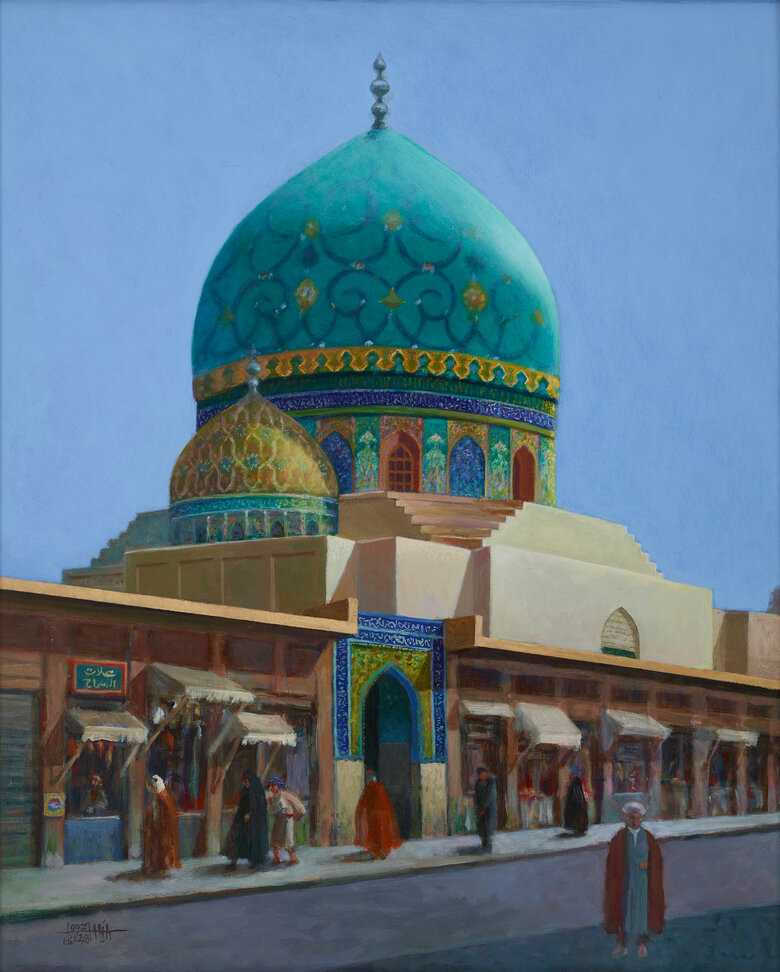In The war, Sahi revisits the ancient battle of Karbala in modern day Iraq, as an allegory for the injustice and martyrdom of contemporary wars. Painted in acrylic on an epic scale, it depicts the brutal massacre of the people of Mesopotamia at the hands of crusaders and mercenaries of Greek, Roman and Germanic origins. Identified through their unique war helmets, the troops attack using spears, leaving a trail of death and destruction in their wake.
Central to the composition, two strikingly large white horses are shown falling on their backs, clearly yielding to their deaths, while a third horse charges enemy lines, head held high. In contrast to its white counterparts, the horse is red, the color of blood and fury; it is weeping and looks intent on revenge.
The use of vibrant colors, characteristic of Sahi’s work, as well as his portrayal of characters and objects in different positions and directions, add a sense of movement and energy to the painting that further exemplifies the painter’s style.
A fervent advocate for justice, the socially engaged artist often resorts to historical allegories to underscore contemporary human plights. In this case, he draws a parallel between the pivotal battle of Karbala, which solidified the rift between the Sunni and Shi’a Muslim communities, and the wars waged by Saddam Hussein against Iran and Kuwait, his massacres of Kurds and Shiites, and the US-led invasion of Iraq. A staunch believer in the cyclical nature of history, Sahi’s references aim to educate, critically reflect on, and advocate for justice and the pursuit of liberty. In The war, he depicts himself at the very far right of the painting, eyes welling with tears, as he bears witness to the atrocity, further alluding to the undeniable imprint of past on present.
Although well-traveled, having lived and studied in Europe for a big part of his life, the artist’s quintessential Iraqiness carries through the totality of his work. Influenced by Renaissance painters, Sahi nonetheless adamantly draws inspiration from his Iraqi heritage. From Mesopotamian mythology to Islamic art, his most prominent paintings address the social, cultural and political contexts of Iraq, as in The war, with the battle of Karbala, which still holds important significance within the Shi’a community to this present day.
signed with location in Arabic and dated in English front lower right










